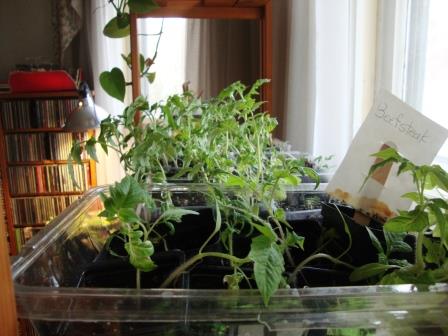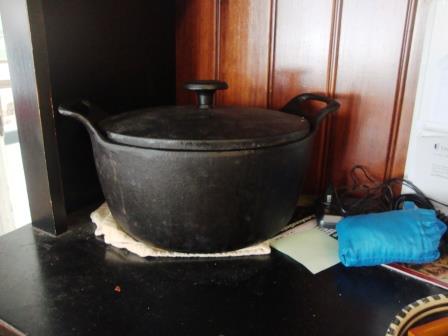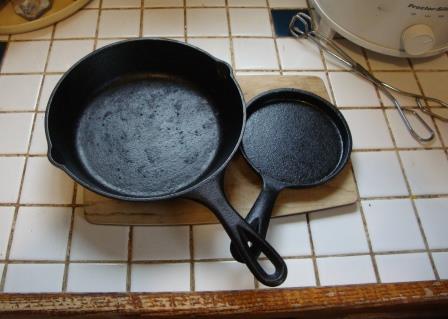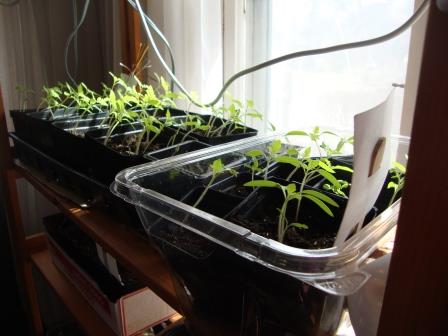Once again I find myself feeling fortunate to live in the Great Lakes region. While California dries up to a dust bowl level or worse, it’s easy to feel smug for conserving water where I am. But then I realize – my own water-saving techniques would be a drop in the bucket in Southern California (pun unintended, sort of).
As soon as our new garage is built, I’ll set up the rain barrels to catch and collect rain water. Those rain barrels are wonderful. I have two, and they provide enough water to keep my garden growing. If I’m honest, however, these two big barrels collect enough water in a typical year. The south west region of the U.S. has had several years in a row that were anything but typical. A rain barrel is only good when rain falls.
I was feeling virtuous for reusing sink water. After washing a few dishes, I scooped up the soapy water and watered my tomato and pepper seedlings. Plants seem to thrive with this not-quite-pristine water. But then again – my water bills are fairly low because, well, because we live in the Great Lakes basin. There’s a lot of fresh water to go around. Even this sink full of the valuable liquid would boost my water bill in the hot sun of SoCal.
And that takes me back to an incident that soaked our front yard until it felt like a sponge or quicksand: the Water-Gas Leak Disaster. When an irresponsible worker drove a bobcat over the curb stop that directs water from the main into our home, that break flowed into the ground until it could hold no more. Then it sent gallons and gallons into our basement. The rest is history – bad memories, to be sure, but history.
I remember talking to a man from the water department who explained the damage to me. I reacted with an “Oh, no, will we be billed for this leak?” He assured me no, because it hadn’t reached the meter. Unfortunately, though, every ounce was treated water gone to waste. Treating water costs money, no matter who pays it.
When our curb stop was broken and the water flowed underground, our small front lawn became very, very muddy. If I lived in a drought stricken area, I’d be wise to not even have a lawn. A green grass lawn uses a lot of water just for basic maintenance.
If I’m to draw conclusions from this rambling, I guess I shouldn’t be feeling too smug about my own water conservation efforts, but I should keep doing what I’m doing. If I can expand those efforts, that might be even better.






